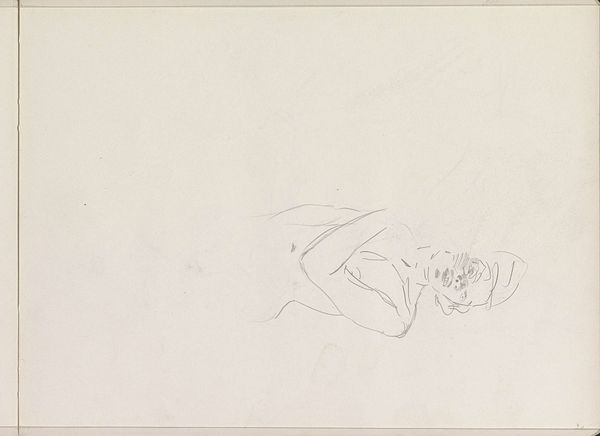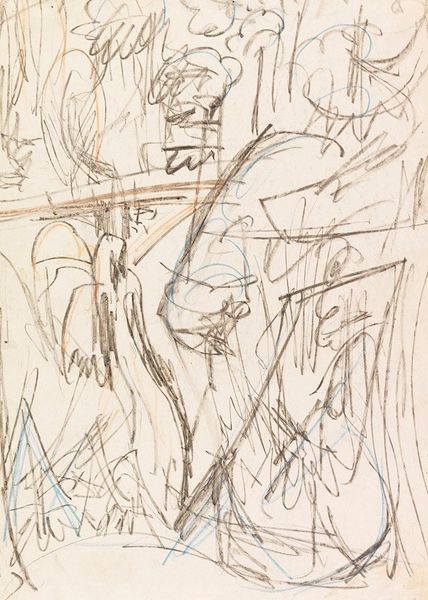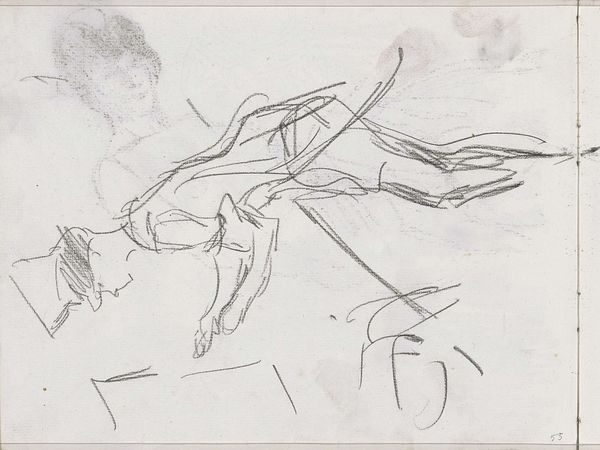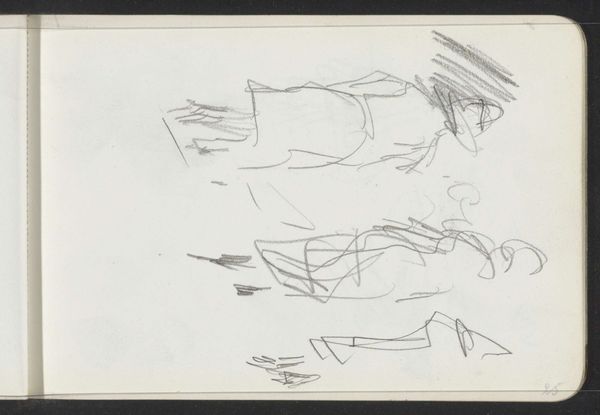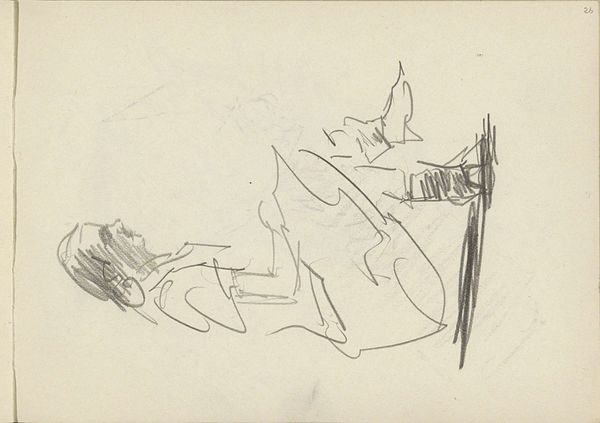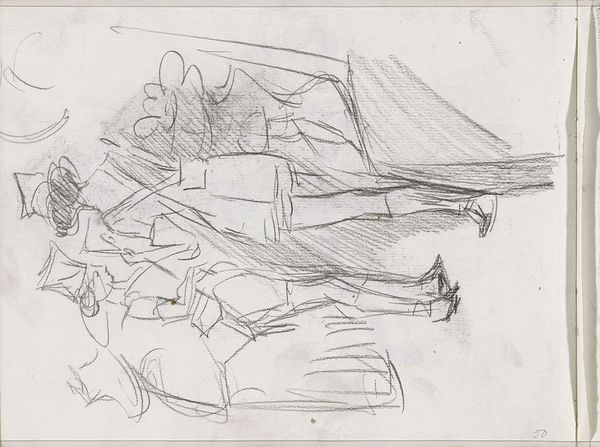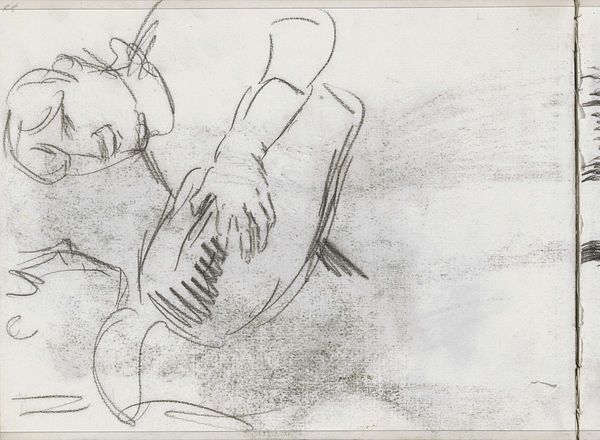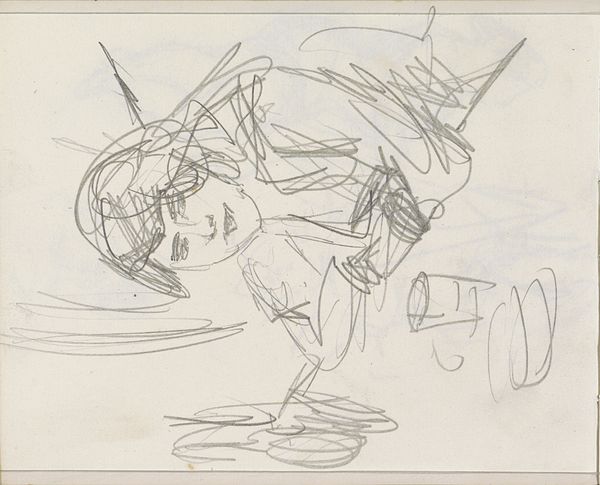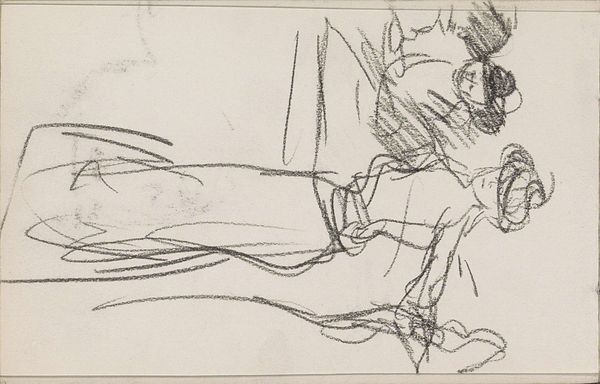
drawing, graphite
#
drawing
#
german-expressionism
#
figuration
#
abstract
#
expressionism
#
graphite
#
nude
Copyright: Public Domain: Artvee
Editor: Here we have Ernst Ludwig Kirchner's "Liegende," created in 1914, using graphite. It feels fragmented and raw. How would you interpret this work? Curator: Looking at the graphite lines, I'm immediately drawn to the labor involved in creating such a dynamic composition with such basic materials. Consider the availability and production of graphite during this time – its transformation from raw material to art supply speaks to broader societal shifts in industrialization and the accessibility of art creation. Editor: So, the medium itself provides a layer of context. How does that influence your reading of the "nude" theme? Curator: Precisely. The choice of graphite – readily available yet requiring skill to manipulate – juxtaposes with the tradition of nude figures, often rendered in more "precious" media. The nude here, produced via rudimentary means, challenges conventional high art perceptions of both the subject and production. We also should discuss its connections with "Die Brücke," and its aim to use inexpensive materials in the making of works with everyday subject matter. Editor: I see what you mean. It brings the image back down to earth, connecting it with ordinary labor. Do you think this has bearing on the abstraction visible in this drawing? Curator: Absolutely. This drawing stands against traditional notions of fine art rooted in meticulous representation and skill, pushing back at the bourgeois values enshrined within academic practice and state patronage. By choosing mass-produced supplies to represent a figure and, in turn, German society in 1914, we consider artmaking to be intrinsically embedded in systems of making. Editor: I hadn't considered the material that deeply, but now I'm viewing Kirchner's piece as a challenge to art-making norms. Thanks for expanding my perspective! Curator: My pleasure. Analyzing through a material lens encourages us to view art not in isolation, but in relation to networks of material production, social exchange, and cultural value.
Comments
No comments
Be the first to comment and join the conversation on the ultimate creative platform.

